7 Bass pale ale
trystanhoward
Introduction
Bass’s pale ale is a type of ale owned by a world brewing company called Anheuser-Busch InBev’s Salesbury Brewery where the beer is made. Bass is a full body ale that was found by William Bass in 1777 in Burton Upon Trent, England. According to its originally recipe it is brewed using hops, water, malts, and accentual oils and minerals to give bass a slight burnt roast aroma and high-quality full-bodied flavor. the ale has been under license for well over 150 years and claims to be England’s first pale ale provider.
Bass’s ale is known for its taste and “drinkability”. It is from the English hops the give Bass ale it’s floral notes. Also the malts give bass its toasty highlights in a balance between sweet malts and bitter hops. According to the Beerlys Bass pale ale by Tom Smillie “the mouthfeel is light to medium and the finish is reminiscent of Guinness (minus the bitter roasted malt flavor)”.
Bass ale has a 5.1 % alcohol content which may vary depending if you get another type of their ales.
Here is a video on the review of Bass ale
https://www.youtube.com/watch?v=QXkWTDcTMKg
Origins
Beer at the time was a old invention when the romans came to England, however it was not until the Anglo’s and the Saxons came to Britain did the people start to take a interest in beers and meads. The earliest mention of beer in Britain is about a German alewife in Colchester in 1412. From then the uses of hops in beer grew during 1520in Kent. However, ale drinking by English men and women continued which then made a demand for the continued brewing of ale.it is estimated that around the 18th century un hopped ale ceased to be popular and in fact beer became the more dominate brewing. In the 17th century the export of beer started to become more demanding as beer was introduced to other lands like India, Australia, and Guyana.
It was also in this century where Bass would be created by William Bass and start the brewing of ale in 1777. The brewery saw remote markable growth in Russia 1784 and in northern America 1799. For much of the history of the flagship brand it was known as in India pale ale because the shipments to British forces overseas. In 1850 the Brewery was producing 100 UK barrels forty 100,250 US barrels per year of bass ale. In 1962 bass acquired the Worthington brewery and continued to make the popular White shield, which was a bottled conditioned pale ale. 1960 Bass continued to grow, they merged with Mitchells and Butler, and later became the UK’s largest Brewery following the joining of Charrinton United Breweries, brewers of Carling. After this they renamed the company to Bass Charrington Ltd and would later be known as Bass PLC.
Milestones
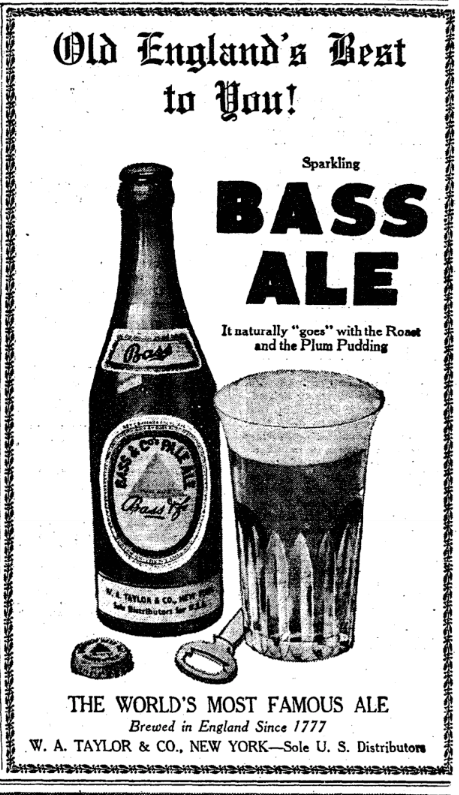
In 1902, Bass brewed a special ale to commemorate King Edward VII visit to their brewery. The corked-finished bottles were given the label of King’s Ale before distribution. The value of these bottles is equally as desirable as bottles of Radcliffe ale, which was brewed to celebrate the birth of the brewer’s director’s son and intended to be drunk on his 21st birthday. The company would keep growing and evenly purchase and manage pubs around the UK. Bass ale acquired the Holiday Inn hotel chain and expanding this to include Holiday Inn Express and Staybridge Suites. It also led to the purchase of several soft drink companies. By the 1990 the company had grown so much that Bass had a separate division for their beer efforts named Bass Brewers.
In 2000 the company decided to focus its efforts on the hospitality industry, stop the production of Bass, and sold brewing operations to Belgium Interbrew S.A. for $3.5 billion. The Monopolies legislation demanded that Interbrew get rid of a large piece of their breweries and brands, the buyers of these breweries would evenly make Coors. Eventually Interbrew would merge with AmBev, creating InBev and the new name of Anheuser-Busch InBev. After this emersion of companies Bass became part of the largest brewing company in the world. It was because of this that Bass could be made to export all over the world.
Here is a commercial that Bass made around 2009
https://www.youtube.com/watch?v=7bCD4F5s6Wc
In the 1990’s Bass was rebranded from “Bass India pale ale” to just being named “Bass pale ale”. Because of the popularity and impressive exporting Bass pale ale became the first registered trade mark in the UK in 1876. This trade make is seen on every bottle as a red triangle logo, which was made famous in Edouard Manet’s 1882 painting known as “A bar at the Folies-Bergère” and in multiply painting by Picasso. There have also been many other accounts of famous people in history drinking Bass such as a claim that Sir Earnest Shackleton during his expedition in the south pole drink Bass. Another claim that cannot be dismissed is that the RMS Titanic was carrying 500 cases (12 000 bottles) of Bass ale when it sank in 1912, nine bottles were found from the wreckage and brought back during a salvage operation in the 1990’s.
To this day, Bass pale ale is enjoyed in every pub around the world, and the corporate owners still follow the original recipe. According to Beerandbrewing.com they describe Bass as “an amber-colored brew with light, burned, roast aroma”. This is made using English malts and hops, brewed with two strains of yeast that give a malty, and slightly nutty flavor. Bass has also been frequently used as the bottom ingredient of a black and tan, where the bar tender fills half the glass with a pale ale and the using a specialty spoon pours a stout on top, creating a two-layer beverage were the stout floats on top of the ale.
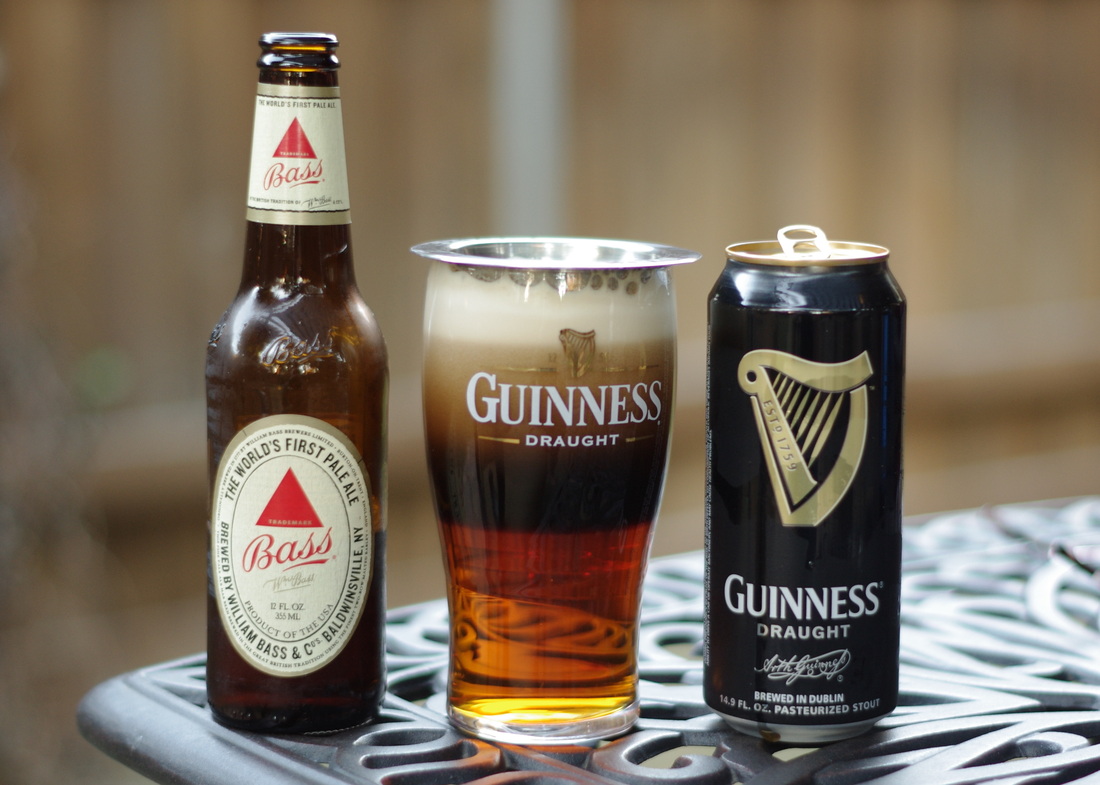
The Industrial revolution
During the time of the industrial revolution the Bass Ale came across new technology that breweries use today in brewing beers. Some of these new pieces of technology were the thermometer, the hydrometer, and the steam engine. The thermometer was used in the brewing process to keep the temperature of the beer at a consistent level. This made it easier for the brewer because he/she did not have to check to see if the beer was too hot or too cold and it help them be more accurate with their brewing temps. The hydrometer was used in the brewing process to measure the density of the beer and allowed the brewer to regulate what he/she needed in his brew. This made it easier for the people at Bass to calculate the yield of the different malts they were using to make their beer. Lastly the invention of the steam engine would have assisted in the brewing process of beers at Bass Ale. This invention led to the creation of both mechanical refrigeration, cost reduction of coal, and faster transportation. Mechanical refrigeration was beneficial to the process of making beer because it would allow the beer to cool faster than if it was in a room temperature environment, this led to a much faster production time. Also, the invention of the steam engine led to the cost reduction of coal which meant that the breweries could gain more income from the sale of beer. Lastly the invention of the steam engine allowed the creation of fast transportation so that the deliver of the beer could reach the intended destination faster. An example of the transportation methods that were the invented was the steamboat/ ferry.
Beer Style
Bass Ale is generally known for their original pale ale which was established in 1777. The pale ale that Bass is know for is exported from the United Kingdom to all around the world. Usually brewed around 5% ABV normally exported in a container of six bottles, or more commonly know as a six pack of beer. Like other ales, Bass ale has a top fermenting yeast that is fermented at a warmer temperature for 3 – 5 consecutive days. This process also allows for the beer to have a more fruity and robust flavor. It is because of the hops and the malts that the beer is brewed with a slightly burnt aroma and a full body flavor. Pale ales were originally from England and are described by the website craftbeer.com as “not as dark as the popular porter. Up to the 18th century, beers in England were mostly deep brown or black in color, and as malting technology improved, so did the ability to control the intensity of roast and flavor”. Some of the defining characteristics of pale ales are the clear yellow look of the beer with a half an inch to an inch of head when it is poured into a glass. Like other beers and ales, it can be drunk at a room temperature but for the best flavor it should be drunken at a refrigerated temperature. Lastly because the beer has been founded in the UK there are pubs in England that are dedicated to the proper serving of Bass Ale and other beers.
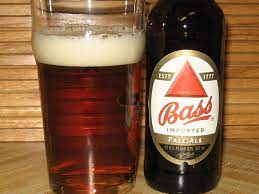
WW1 and WW2 Era
During WW1 and WW2 Bass ale was the choice of many soldiers during their past time and for the people at home. During WW1 there were anti-alcohol movements that had grown and intensified during the nineteenth century. Some of the people that chose this side of anti-alcoholism felt that they should abstain from drinking alcohol to be ready for action for the war. The affect of this would see that the pubs hours of work be reduced, and more taxes placed on beer. In the trenches how ever, Bass would find a demand for the soldiers at the front. This would be because the officers would issue a ration of beer or rum to all the soldiers before an operation or to boost morale. As the first world war ended, the production of beer increased between 1918 and the late 1930s and the recovery of Bass ale was less than other breweries because it was based in the United Kingdom. This meant that Bass ale could focus on a cheaper way to export their beer using cans. This new use would allow the beer to stay the way it was brewed and be lighter for a person to carry. How ever Peace time would not last because it would not be long for the start of WW2 to come into the world with a bang. During WW2 Bass ale had to support the troops by allocating a small percentage of the beer they made to go over seas. After the war, there were many changes as to the distribution of the beer, people only hade to walk to a store to buy the type of beer that they wanted by packs. This meant that people would not need to drink the beer at an establishment and would be able to take the beer home.
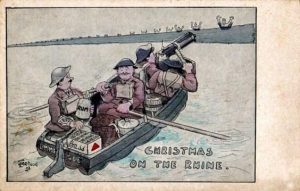
Consolidation
During and after the post war era bass ale had merged with several companies but to see these changes, we must go back to the first company Bass ale sold to. As was stated earlier Bass ale sold the brewing operations to the Belgian company called Interbrew for 3.5 billion dollars. Interbrew was known for having other famous beers like Stella Artois. In 1987 Interbrew expanded to Canada to make a transaction to include Labatt’s assets. These assets would include the Toronto Blue Jays, Sports Network, and the Toronto Argonauts. Now going past 2000 when Interbrew would acquire Bass ale to in 2004 when Interbrew would merge with Ambev to become InBev. AmBev, before it merged with Interbrew, was a Brazilian beer company that was formed by a merger in 1999 between Brahma and Antarctica brewing companies. On June 12, 2008, InBev offered $46 billion to buy the company of Anheuser – Busch which would allow the two of the worlds largest Brewing companies in come together as one. This also meant that the merger would also not affect the breweries in the U.S from closing and would instead allow for the Management and the board members on both sides to keep the jobs that they had. Finally, in was on July 13, 2008, that Anheuser – Busch announced to the public that the company had agreed to the acquisition by InBev for $52 billion in cash, or in other terms as $70 per share. Later on, it would be decided that the company would be renamed as Anheuser- Busch InBev and the Anheuser Busch would keep two seats on the board of directors.
Marketing and Branding
For many years before joining Interbrew Bass was already a pioneer in marketing. Before Bass had any relationships with any brewing companies they relied on word of mouth and the iconic red triangle on their exports. After 1855 the Bass ale added both a blue and white triangle to their barrels while also still implementing the red triangle on the pale ale casks. These triangles would be used to signify which brewery the cask came from; however, all bottles were always given the red triangle. The blue triangle was brought back after WW2 for the pale ale that was not bottled. According to Wikipedia the Bass Red Triangle was the first trademark to be registered under the United Kingdoms trademarks registration Act in 1875.” https://en.wikipedia.org/wiki/Bass_Brewery
This act came into effect in the UK on January 1, 1876, and some people say that a Bass employee queued over night just to be first in line to be first to register the triangle that people around the world know. The two trademarks that Bass registered were the triangle for their pale ale and a red diamond to represent the new strong ale. Now the trademarks are owned by Brandbrew SA, which is a part of InBev based in Luxembourg Germany. Lastly Bass’ red triangle has occasionally been seen and heard in art and literature. Some of these pieces include Edouard Manet’s 1882 painting A bar at the Folies-Bergère and over 40 other paintings made by Picasso around 1914. Another example of Bass represented in art and literature is the “Oxen of the Sun” episode of James Joyce’s Ulysses.
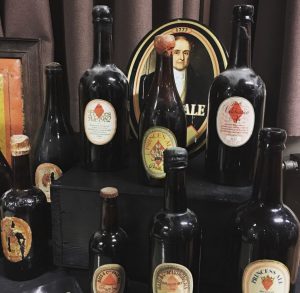
Modern Era
Now a days, Bass ale has grown so much that it has become a highly mature brewing company, but it is because of this those sales are affected. To combat this problem and not fall to having to close, Bass like other beers use different promotional activities to spread the word about their beer. One of the examples of a promotional activities that Bass is commercials. This helps the company to spread the word all over the United Kingdom and all over the world. Another promotional activity that Bass has done in the past was the use of new technology to support brewing. This would help them to produce their product faster and more accurately to support their consumers not only in the UK but around the world. Another promotional activity that Bass has done in the UK is the purchase and use of dive bars around the United Kingdom. This allows the consumer to go into a bar and enjoy time with their friends and/ or family and know that they can expect the bartender is well versed in how to pour a great Bass ale. Lastly another way of how Bass ale has used promotional activities in the past is by newspapers, however times have changed, and Bass has made a website to promote themselves. This website lets the reader learn about the brief history about Bass’s methods of brewing, its past ownership, and also in a page labeled About Us it shows Bass’ dedication to both it’s community and the environment and how it works to help both.
References
https://beerandbrewing.com/dictionary/28hc1iTi5P/
Wikimedia Foundation. (2022, March 21). Bass Brewery. Wikipedia. Retrieved April 7, 2022, from https://en.wikipedia.org/wiki/Bass_Brewery
https://www.handfamilycompanies.com/bass
kimberly.bowker.9. (2017, November 17). American Pale Ale: A style that changed everything. CraftBeer.com. Retrieved March 13, 2022, from https://www.craftbeer.com/craft-beer-muses/american-pale-ale-changed-everything#:~:text=Originating%20in%20England%2C%20the%20term,intensity%20of%20roast%20and%20flavor.
Wartime beer stories – national brewery centre archives. (n.d.). Retrieved March 13, 2022, from https://www.nbcarchives.co.uk/explore-the-collections/brewing-in-wartime/wartime-beer-stories/

